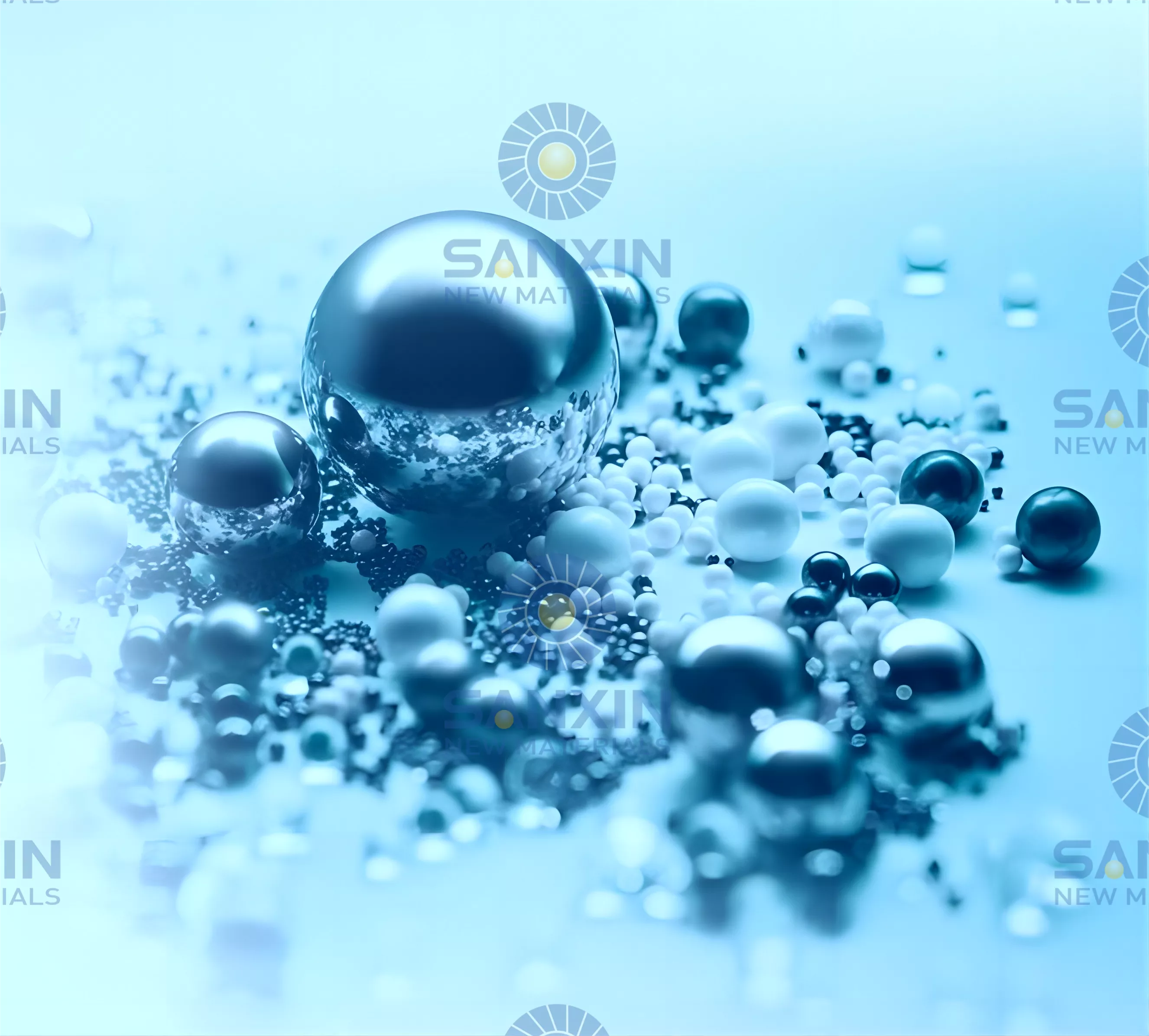Understanding Various Types of Abrasive Media
Sand mills commonly employ abrasive media such as glass beads, zirconia beads, zirconium silicate beads, and rare earth zirconium oxide beads.
Glass Beads: Economical yet prone to extended grinding times and high abrasion due to their low density, potentially contaminating products. Except for older equipment, new devices seldom utilize these.
Zirconium Silicate Beads: Medium density, larger in size, offer shorter grinding times. Despite being cost-efficient, they are prone to forming hollow defects, breakage, scratching the mill lining, and contaminating slurries.

Rare Earth Zirconium Oxide: Higher density, larger size, shorter grinding times, and priced reasonably. Utilizing sintering processes, they lack hollow defects, commonly preferred by most titanium dioxide manufacturers.
Zirconium Oxide Beads: High density, superior strength, larger size, and offer high grinding efficiency. Despite their higher price, they stand out for their absence of hollow spaces, breakage, and contamination, making them an ideal abrasive medium for dispersing synthetic rutile in the chemical industry.
Generally, the greater the density of the abrasive media and the smaller their size, the more numerous the contact points within a unit volume. This abundance of contact points enhances grinding efficiency and overall effectiveness, particularly evident when grinding high-solid content and high-viscosity products.
The quality and efficiency of sand mills are intricately tied to the choice of abrasive media. Higher density and smaller-sized media result in more contact points within a unit volume, significantly elevating grinding efficiency and efficacy. This advantage is particularly pronounced when handling high-solid content and high-viscosity products.
Selection of Vertical Sand Mill Media
The quantity of abrasive media can be such that it forms a layer just slightly above the upper impeller within the cylinder, allowing room for the media to move upwards. However, this consideration must align with the speed of ink delivery; a faster delivery rate necessitates leaving a slightly larger space above the media. Therefore, adjusting the amount of abrasive media is essential, ensuring an optimal balance.
Selection of Horizontal Sand Mill Media
Begin with approximately 80% of the chamber volume filled with abrasive media, then adjust the quantity based on the material's discharge temperature or cooling water temperature. Typically, if the temperature exceeds acceptable limits, reducing the media quantity is recommended. Conversely, within acceptable temperature ranges, before increasing shaft speed, consider adding more abrasive media.
In general, ink discharge temperatures within the range of 50 to 70°C are permissible. Adjusting the media quantity serves as a metric, particularly crucial for less stable inks. Adequate pre-dispersion is pivotal; regardless of the sand mill type used, ink entering the mill must undergo proper pre-dispersion to optimize the mill's operational efficiency.
The shear force exerted by abrasive media on pigment agglomerates (or pigment particles) is inversely proportional to the size of these agglomerates. Smaller agglomerates experience greater shear forces between the media, resulting in improved grinding and dispersion effects.
Introduction to Physical Properties of Abrasive Media
Density of Abrasive MediaDensity, commonly expressed through true and bulk densities in documentation, is determined by molecular weight and percentage composition of various oxides. Higher-density beads typically exhibit greater impact force, enhancing grinding efficiency, albeit causing relatively more wear on mill contact parts (internal cylinder, dispersion disc). Thus, achieving synergy between slurry viscosity and flow rate becomes critical. High-density beads suit higher-viscosity slurries.
Hardness of Abrasive MediaMohs and Vickers hardness are common indicators. However, higher hardness in abrasive beads does not necessarily correlate with higher wear rates.
Particle Size of Abrasive MediaThe size of abrasive beads determines the number of contact points with materials. Smaller beads offer more contact points within the same volume, theoretically enhancing grinding efficiency. Conversely, when dealing with larger initial particle sizes, such as 100 microns, 1mm beads might not be optimal as their impact may not achieve thorough grinding and dispersion. In such cases, larger bead sizes should be considered.

Submit your demand,
we will contact you ASAP.

Sanxin New Materials Co., Ltd. focus on producing and selling ceramic beads and parts such as grinding media, blasting beads, bearing ball, structure part, ceramic wear-resistant liners, Nanoparticles Nano Powder

